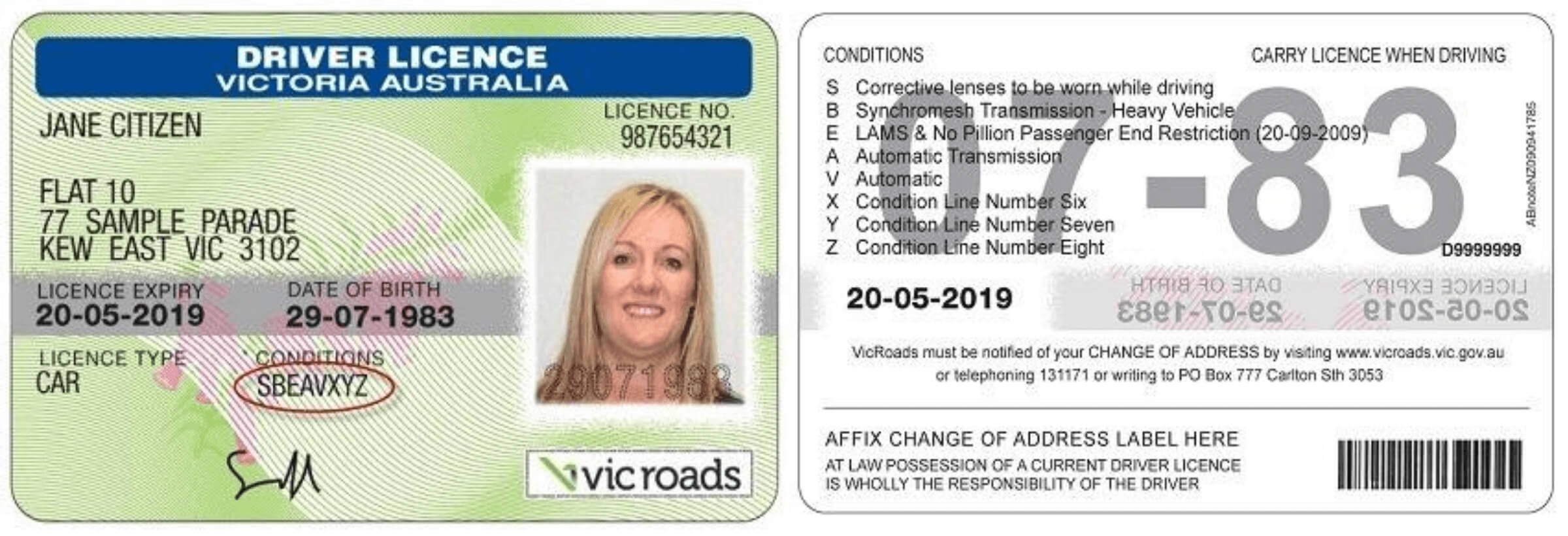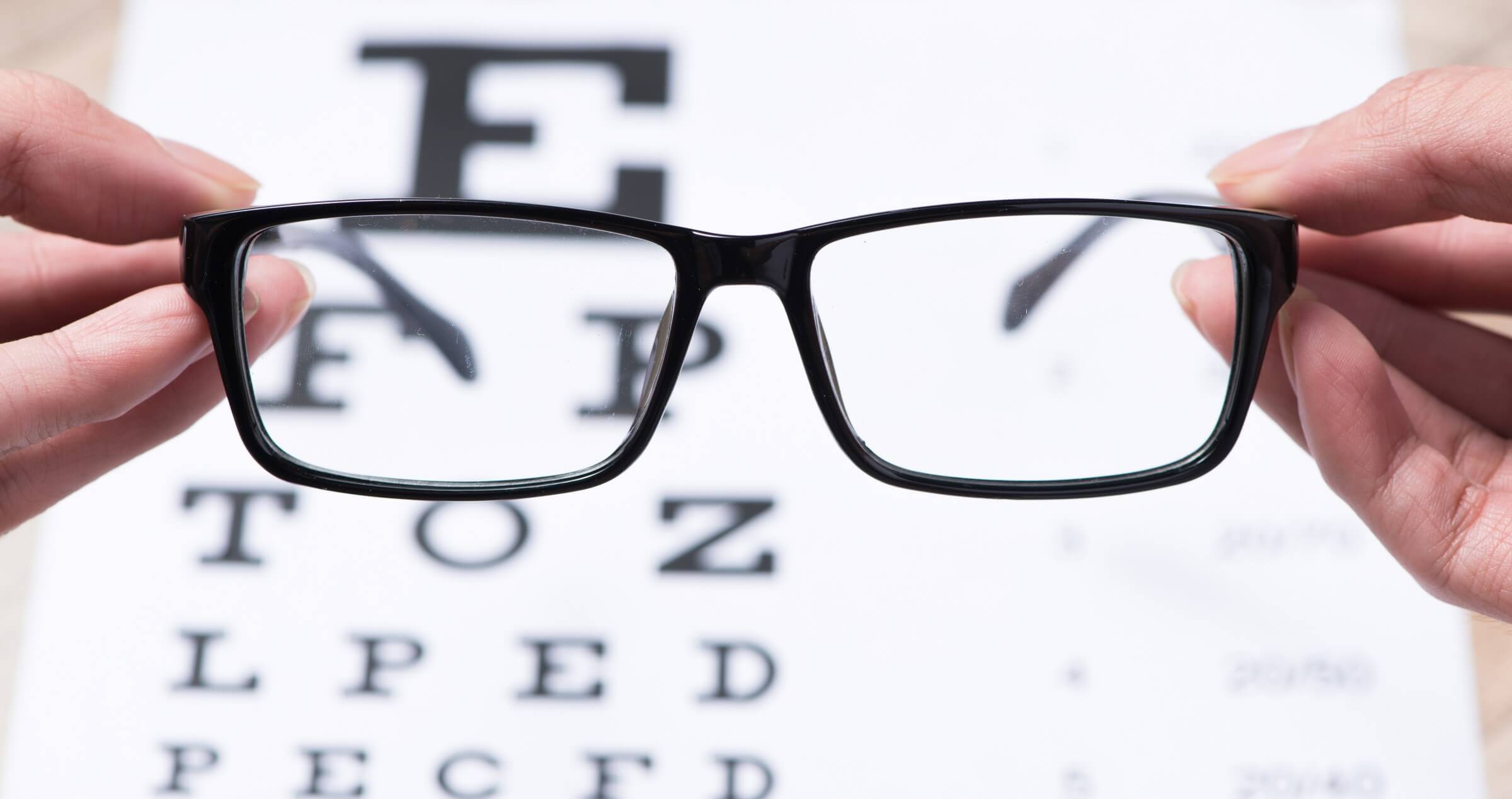Glaucoma Vision Loss and Driving
The National Transport Commission and Austroads have identified glaucoma as a health condition that can affect our capacity to drive safely. Therefore, it is important to be aware of how glaucoma can influence our ability to remain safe on the road.
- Visual Field LossShow lessShow more
Glaucoma can cause peripheral visual field loss resulting in reduced awareness of objects and people in our side vision. Central vision is often unaffected in the early stages of glaucoma, so our ability to see clearly is unchanged. Initial changes in the visual field are subtle but can be detrimental to our safety on the road. Often, when small areas of vision disappear, the brain fills in the image to create an inaccurate but believable scene in the part of the visual field that is diminished. This is called the “filling-in-effect” (Image 1). The filling-in-effect influences our visual perception when driving and impairs our ability to see hazards on the road such as pedestrians, bike riders, other vehicles, road debris or potholes.
Glaucomatous visual field loss can also enlarge our blindspot when driving and impede our ability to safely merge into traffic or change lanes.

- Impaired Dark AdaptationShow lessShow more
Our visual field plays an important role in being able to adjust to changes in lighting conditions and manage glare. Reduced peripheral vision can hinder our ability to rapidly adapt to dynamic variations in lighting, such as when we are driving through a series of shadows cast on the road.
Difficulty to adapt to dim or dark environments can also impair our ability to manage glare from oncoming traffic at night or judge distances of surrounding cars.
Research has reported that people with glaucoma commonly choose to avoid driving at night or in poor lighting conditions due to difficulty with dark adaptation.

- Decrease in Contrast SensitivityShow lessShow more
Contrast is our ability to see how faded an image is before it becomes indistinguishable. Glaucomatous loss can cause subtle and unconscious changes in our contrast vision. Good contrast sensitivity is important to be able to see pedestrians, other vehicles and hazards in poor lighting conditions and on overcast and rainy days.
- Reduced Depth PerceptionShow lessShow more
Depth perception is likely to become affected when there are asymmetrical changes in the eyes. Reduced depth perception can impair our ability to judge distances of moving and stationary hazards. Loss of depth perception can affect our ability to judge the distance of surrounding cars, knowing when to reduce our speed or stop, safely change lanes or merge into traffic.
Drivers with glaucoma can seek advice from their ophthalmologist, general practitioner, orthoptist or optometrist to understand their glaucomatous vision loss and the potential impact on their driving.
Glaucoma can affect our vision and ability to drive in the following ways:
- Mandatory ReportingShow lessShow more
It is important to understand that by law, doctors and optometrists are obligated to contact the relevant State or Territory licensing authority and report patients who no longer meet the Australian Driving Standard requirements for vision.
- Self-ReportingShow lessShow more
Drivers are legally required to notify their State or Territory licensing authority of a serious or chronic medical condition (including glaucoma), injuries or disabilities that may affect fitness to drive. Failure to notify could affect insurance cover.
Drivers with a chronic eye condition are also required to report a change in vision or if they have a vision impairment that can impede safe driving.
- Wearing Glasses and Contact LensesShow lessShow more
Drivers who are able to meet the eligibility for driving without glasses will be able to hold an unconditional licence. However, drivers who require glasses or contact lenses to meet the vision standards for driving will hold a conditional licence. The use of glasses will be listed as a condition on your licence (identified as S under conditions) (Image 2). Additionally, drivers will be required to pass a new eyesight test if they start or stop wearing glasses or contact lenses to drive to ensure they continue to meet the vision requirements for driving.

Assessing Vision for Driving
When you apply for or renewing a licence, you will be required to pass an eyesight test. Licensing requirements vary between states, but generally an eye care practitioner will assess your visual acuity and visual field to establish your fitness to drive.
Visual acuity is a measure of central vision and our ability to distinguish details and the shape of objects. Commonly, visual acuity is measured using a chart with different sized letters. The measurement will appear as a fraction, for example 6/12, where the numerator is the testing distance and the denominator is the measurement of acuity.
Visual Filed is the extent of side vision that we can see. Visual field tests, also known as perimetry tests, are specifically designed to assess and detect changes that occur within the normal visual field. The visual field measurement is commonly recorded in degrees, for example 65 degrees indicates vision extends 65degrees from the centre of the visual field.
The binocular Esterman visual field test is a specific test used to assess visual field for driving. The Esterman is a functional perimetry test that more intensely assesses central vision, inferior visual field and horizontal meridian. These are the areas of the visual field that we rely on most when driving. Austroads have specified that the Esterman is conducted with both eyes open, with fixation monitoring (looking straight ahead at all times) and wearing the pair of glasses used for driving, whether it is single vision, bifocal or multifocal glasses.

Australian Driving Standards
Each State and Territory licensing authority will review the information reported by an optometrist or ophthalmologist who have assessed vision according to the national fitness to drive standards.
All drivers must meet the following criteria to be able to hold a drivers licence:
Visual Acuity of 6/12 or better without glasses*
AND
Visual Field without glasses*:
- Binocular visual field extending horizontally 110 degrees and above and below 10 degrees
AND
- No significant field loss within a central radius of 20 degrees of foveal fixation
OR
- No more than 4 areas of field loss within a central radius of 20 degrees of foveal fixation
* If you require glasses to meet the requirement then this will be conditional on your licence
Additional Information
- Loss of vision in one eye (monocular): Drivers cannot drive for 3 months after losing vision in one eye. After 3 months drivers must meet visual acuity and visual field criteria.
- Poor night vision: Drivers may be issued with a conditional licence (e.g. no night driving)
Drivers Licence Renewal
States and Territories licensing authorities have their own drivers licence renewal system. Certain states require drivers to have regular eyesight tests depending on their age. Drivers who fail the fitness to drive criteria and lose their licence are able to follow their state or territories’ appeals process.
For further information it is best to contact your State or Territory driver licensing authority.
Strategies to Support Safe Driving
The following strategies are to support drivers specifically with glaucoma:
- Position your seat correctly and utilise mirrors and reversing cameras to minimise your blind spots.
- Ensure you are well rested and alert.
- Reduce your speed when driving in the rain, through fog or on overcast days to give you sufficient time to react to unexpected hazards.
- Scan your environment twice before changing lanes.
- Ensure there is a sufficient gap between your car and the car in front of you. A safe following distance can be achieved by using the standard three-second rule as a guide to judge the distance of the car in front.
- Pre-plan unfamiliar routes using a navigation system.
- Reduce your speed as you approach a turn or traffic lights.
- Mute or turn off your mobile phone when driving so your attention is not compromised when you are on the road. This is particularly important when driving in unfamiliar areas.

Vehicle Safety Features
The following vehicle safety features reduces the risk of hazards and also improves safety of the driver and their passengers:
- Electronic stability control
- Adaptive cruise control
- Road sign information
- Distance alert
- Autonomous emergency braking
- Driver attention detection
- Lane departure and blind spot warning systems
- Rear collision warning and cross-traffic alert
References
-
Heijl, A., Patella, V. M., & Bengtsson, B. (2020). Effective Perimetry (4th ed.) [E-book]. Carl Zeiss Meditec, Inc. https://www.academia.edu/2183305/Effective_Perimetry_Zeiss_Visual_Field_Primer_4th_Edition._Heijl_Bengtsson_and_Patella_2012_
-
Tam, A. L., Trope, G. E., Buys, Y. M., Yang, Y., Shen, C., & Jin, Y. P. (2018). Self-perceived Impact of glaucomatous visual field loss and visual disabilities on driving difficulty and cessation. Journal of glaucoma, 27(11), 981-986.
-
doi: 10.1097/IJG.0000000000001079
-
VicRoads. (2019, October 28). Licence Conditions. https://www.vicroads.vic.gov.au/licences/licence-and-permit-types/licence-conditions
-
Austroads. (2020). Assessing Fitness to Drive. https://austroads.com.au/publications/assessing-fitness-to-drive/ap-g56/vision-and-eye-disorders/medical-standards-for-licensing-11
-
Department of Transport Western Australia, (2020), https://www.transport.wa.gov.au/
-
Government of South Australia, (2020), Medical Fitness to Drive. https://www.sa.gov.au/topics/driving-and-transport/licences/drivers-licence/medical-fitness-to-drive
-
Vicroads, (2020), Health and Driving https://www.vicroads.vic.gov.au/licences/health-and-driving
-
Transport for NSW, (2020), Are you fit to drive? https://www.rms.nsw.gov.au/roads/licence/health/fit-to-drive.html
-
Tasmanian Government, (2020), Transport Services https://www.transport.tas.gov.au/licensing/
-
Northern Territory Government, (2020), Get Your Drivers Licence https://nt.gov.au/driving/driverlicence/get-your-licence/get-your-driver-licence
-
ACT Government, (2020), ACT Driver Licence Information https://www.accesscanberra.act.gov.au/app/answers/detail/a_id/1581/~/act-driver-licence-information
-
Queensland Government, (2020), Driver Licensing https://www.qld.gov.au/transport/licensing/driver-licensing
